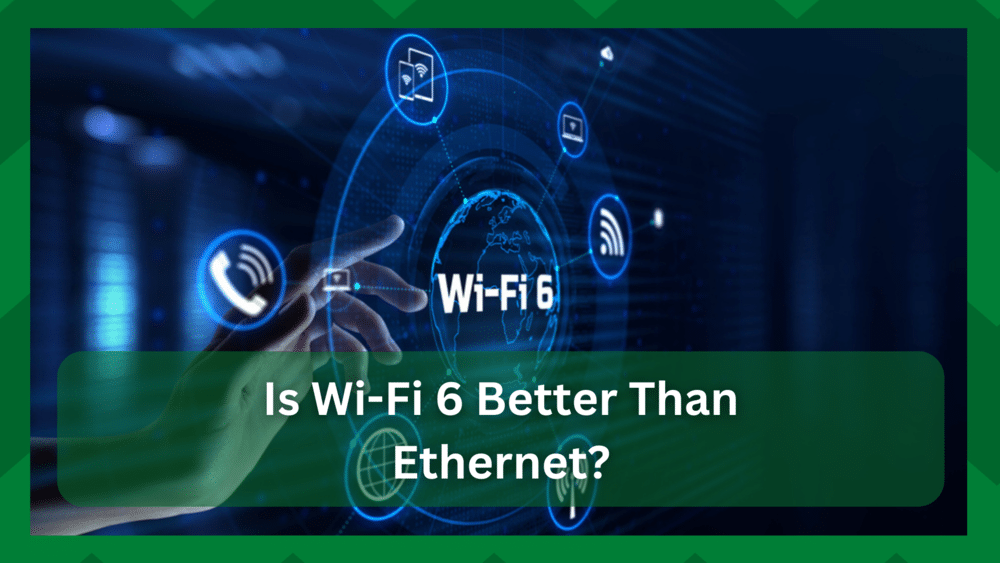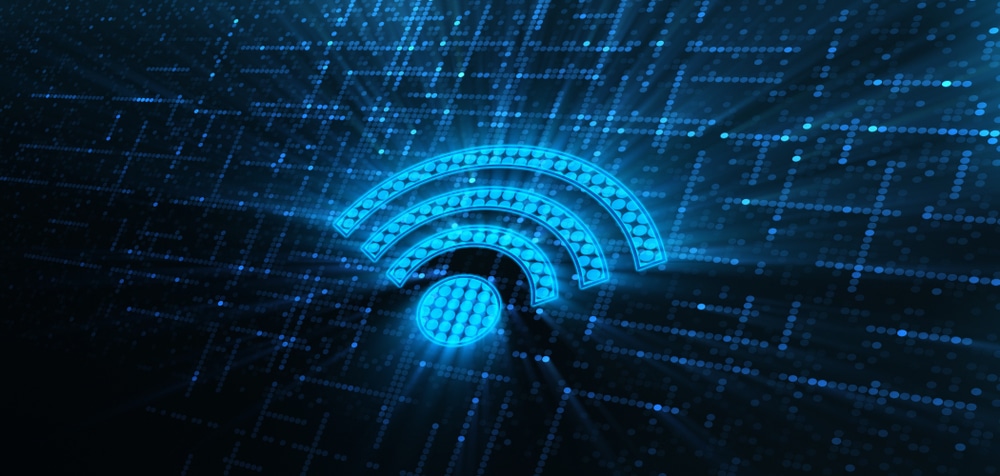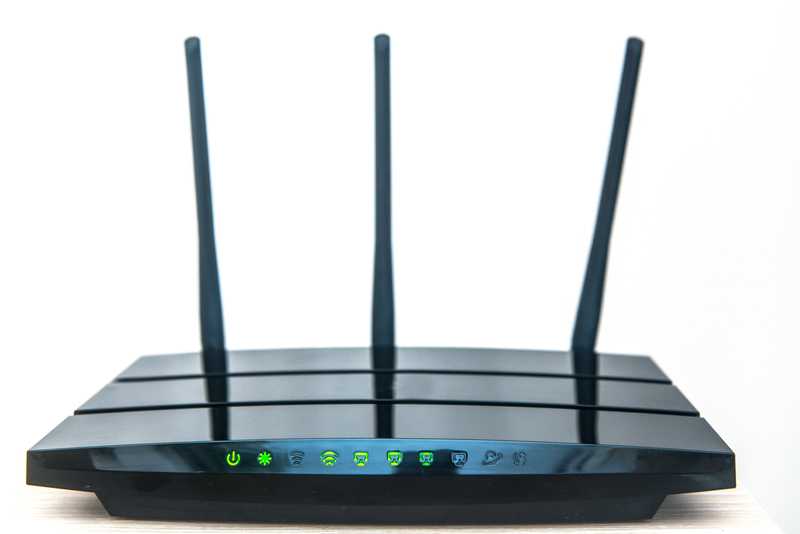
As our need for a reliable, fast internet developed over time, so did technology. There are now many different possibilities for internet connectivity.
Previously, fixed internet, cellular networks, Wi-Fi, and cable connections were all very common, but now, if you have an indoor hardware setup, you will likely have either a Wi-Fi or an Ethernet connection.
Even though many people believe Ethernet to be more stable than wireless, there is no disputing the rise in demand for Wi-Fi.
But with the new Wi-Fi technology, you’ll undoubtedly find yourself in the driver’s seat because the game has significantly changed since the introduction of the new Wi-Fi 6 technology.
Is Wi-Fi 6 Faster Than Ethernet?
People all over the world are still using Wi-Fi 5 and Wi-Fi 4 technologies, which are good options, but when compared to Ethernet connections, wires win.
Most of you may believe that using wireless connections reduces your internet speed and reliability by half because wires provide a reliable and fast connection.
However, as wireless technology has advanced, developers are making it as good as Ethernet, if not better, with Wi-Fi 6 technology.
But the question is “Wi-Fi 6 is faster than Ethernet” still rummages into the online forums. Since the comparison does not purport to eliminate the less capable performer, it is critical to comprehend technological advancements in internet connection types.
So in this article, we will be answering this question with a general understanding of how one performs better than the other.
- How Fast Is Ethernet:
Ethernet cables have been around for decades. When fixed broadband and cellular networks were prevalent, people generally considered wired connections to be superior. This has not changed to this day.
Ethernet connections are made directly with your router or modem using compatible wires and connected to your devices such as smart TVs, PCs, and laptops.
This connection can be found in any typical home, and it is the better option if your Wi-Fi is unstable or if you have environmental issues in your area that can be regarded as general triggers for bad Wi-Fi.
However, ordinary Ethernet cables have evolved to provide the fastest speeds of up to 1Gbps for both home and commercial use.
The speed of 1Gbps was regarded as more of a challenge for the Wi-Fi router, and only the most powerful ones were capable of doing so, but at a high cost that most users could not afford.
However, Ethernet cables are inexpensive and easy to obtain, providing you with a dependable and consistent connection.
A standard Ethernet cable can connect up to 5000 meters, which is more than enough for a standard house or a small commercial zone. Cat5e Ethernet cables are typically used, but you can go even further.
Speaking of wired connections, some can provide up to 10Gbps of speed and usually require cat6a or cat7 cable, which are thicker than standard cable types but are less common in residential applications.
However, if you use an Ethernet connection, you will get high-speed gigabit speeds that are faster than Wi-Fi technology and have great reliability, which increases the demand and supply of this network connection type.
The main disadvantage of the Ethernet connection is mobility. Many users nowadays want a network that can provide a reliable connection to multiple devices over long distances.
This increases the demand for Wi-Fi technology, and you would be willing to sacrifice latency if you could get a good connection speed for multiple devices within a reasonable range.
- How Fast Is The Wi-Fi 6 Technology:
Wi-Fi 6 technology is a wireless connection revolution. Most of you will be using Wi-Fi 5 technology, which has a maximum speed of 6.9Gbps and is still a good investment.
However, for a clearer picture, wireless 6 technology can provide speeds of up to 10Gbps. This is more than a typical home would want or need, but it does provide a competitive speed for an Ethernet cable.
Wi-Fi 6 technology employs a full duplex feature, which allows you to send and receive data at the same time. So, if you’re watching a movie and want to send an email, you can do both without the movie buffering or the email lagging.
When it comes to speed, we can pick a winner, but when it comes to technological advancements, Wi-Fi 6 takes the lead.
Even though wireless connections are vulnerable and less consistent, Wi-Fi 6 reduces the likelihood of a slow connection to a relatively low number.
Let’s take a look at the new Wi-Fi 6’s capacity. According to reports, it can connect to 8 devices at the same time and provide them with concurrent speed thanks to its 4×4 MU-MIMO technology.
Though the capacity of Wi-Fi can be debated, the ability of the Wi-Fi 6 router to connect to devices has been thoroughly researched. That is, a standard router will allow you to connect to four devices at the same time.
But, using multiple devices at the same time may be problematic because the Wi-Fi router spends more time switching between devices, which usually degrades connection performance.
Wi-Fi 6 gives you an advantage in this area because it can seamlessly switch between devices while maintaining a consistent connection.
However, when we talk about giving multiple devices access to the same network, we are indirectly talking about sharing the network’s bandwidth. If not intelligently adjusted, the concept of having a smart network will be destroyed.
Wi-Fi 6 does the same thing here. It adjusts the bandwidth allowance for each device so that the traffic of the devices is managed so that no device is denied gigabit speeds. This can significantly improve the performance of your connection.
One thing to keep in mind is that Wi-Fi 6 technology is only compatible with certain routers. That is, they are intended to be compatible with the new Gen-Wi-Fi standard. So it is not much of a debate whether you can get Wi-Fi 6 technology on every router.
You will need to purchase some distinct ones to achieve the desired performance and functionality.
Which Is Better – Wi-Fi 6 Or Ethernet?
We took a look at what both connections can offer you, but in terms of speed, we can say that both have equal capacities. However, if we take the standard speeds, the Ethernet will give you up to 1Gbps and Wi-Fi 6 will give you up to 10Gbps.
As a result, the Wi-Fi 6 is a clear winner. However, in terms of reliability and latency, Ethernet takes the top spot. This is because no matter how advanced the features of Wi-Fi 6 are, it will still struggle to increase the number of connected devices.
So why do gamers and business users continue to prefer Ethernet? The solution is straightforward.
If it were only about speed, many people would have chosen the Wi-Fi connection because it is mobile and allows you to connect to it from a distance without the hassle of having wires all over the place.
However, wireless connections are unreliable. They are easily disconnected due to interference, obstacles, or network congestion. However, Ethernet introduces latency. As a result, you can rely on a constant connection.
As a result, the decision is subjective. You can either choose a connection type in which you are willing to overlook flaws to maximize the potential of your home network.



